

Left/Bottom: bruceman / E+ / Getty Images
Right/Top: Jose A. Bernat Bacete / Moment / Getty Images
Reviewed by Andy Kilborn, Expert Home Building and Remodeling Contributor.Written by HomeAdvisor.
If you’re deciding between cedar and pressure-treated pine, both have their strengths. Cedar is a more durable and attractive choice but can get pricey for those on a budget. Pressure-treated pine is more affordable, although it demands more maintenance and won’t last as long.
“Both cedar and pressure-treated lumber can be a good choice for your project,” says Andy Kilborn, Angi Expert Review Board member and owner of Andy’s Handyman Service in Des Moines, IA. “Regardless of your choice, make sure you plan for ongoing maintenance to increase the life of your project.”
In this article:
- What Is Cedar?
- What Is Pine?
- Appearance
- Cost
- Upkeep
- Durability
- Installation
- Life Span
- Environmental Impact
- Is Cedar or Pine Better for Your Home?
- Cedar and Pine vs. Other Options
What Is Cedar?
Cedar is a softwood with a rich, warm reddish hue and fragrant aroma. In its natural state, it resists rot, moisture, and pests. While expensive, it’s highly durable, long-lasting, and low maintenance.
What Is Pine?
Pressure-treated pine is a widely available and budget-friendly material for decks, fences, and other outdoor constructions. There are also many available stains and finishes to achieve a variety of looks. While affordable, this type of wood is susceptible to warping and requires yearly restaining and refinishing.
Appearance
Cedar’s tight-grained structure and reddish tones make it the more attractive choice, though it fades to a silvery gray over time. With regular staining, pressure-treated wood has a superior ability to maintain its color.
| Cedar | Pine |
|---|---|
| Recognizable; reddish hue that fades to silver | Lighter colors; cream to pale tan or brown |
| White accents and distinctive grain pattern | Has greenish streaks if pressure-treated |
Cedar
Cedar has a distinctive reddish tone that eventually fades to silver-gray as the wood ages. You can maintain the color with wood stain or bring it back to life with a thorough cleaning and applying UV oil.
Pine
Pine tends to have an unremarkable pale tan or light brown hue. As the wood ages, it can appear dull gray or a darker brown. If the pine is pressure-treated, you’ll see green-blue streaks over the surface due to the chemical treatment the wood undergoes to improve its durability outdoors.
Get Estimates Now For Your Fence ProjectCost
Cedar costs more than pressure-treated pine but lasts longer and is naturally weather- and insect-resistant. Price factors include the following:
- Total square footage
- Additional materials (other than boards)
- Added features like posts, stairs, or railings
- Professional labor
| Cedar | Pine |
|---|---|
| $3 – $7 per sq. ft. | $2 – $5 per sq. ft. |
Cedar
On average, cedar deck planks cost between $3 and $7 per square foot. In general, cedar costs about 20% to 30% more than pressure-treated lumber. Cedar is a popular choice for siding due to its appearance and longevity, and cedar siding costs $12,500 on average. It’s also highly prized as a roofing material, with a cedar shake roof priced at around $21,500.
Pine
Pressure-treated pine costs between $2 and $5 per square foot. If you’re looking to install an inexpensive deck, pressure-treated pine is likely the better option.
Upkeep
Cedar naturally resists moisture, while pressure-treated lumber is chemically treated to protect against the elements. Because of this, pressure-treated wood requires more maintenance, such as yearly restaining and sealing. Cedar requires little else aside from yearly sealing, regular cleaning, and inspection.
| Cedar | Pine |
|---|---|
| Naturally resistant to moisture and insects | Requires chemical treatment for longevity outdoors |
| Requires minimal maintenance | Needs yearly maintenance to withstand outdoor use |
| Requires annual cleaning and oiling | Requires yearly cleaning, staining, and sealing |
Cedar
Cedar is naturally resistant to rot, moisture, and insect damage. But it gets dirty and can fade over time. Therefore, although less rigorous maintenance is necessary, you’ll need to perform some annual upkeep if you want to maintain its attractive red color. Cedar gets dirty, and it can fade with constant exposure to sunlight. So you’ll need to clean it every 12 months and apply a coat of protective UV oil.
Pine
If you want pine to remain in good condition outdoors, you need to perform an annual maintenance without fail. Pine is susceptible to rot, moisture, and insect damage, so you need to clean it thoroughly, check for any sign of damage, and then apply a protective sealant. This helps to protect the pine from water damage and insect incursion, helping to fend off rot and mold.
Durability
Cedar is stronger and more durable than pressure-treated lumber. Pressure-treated lumber can warp and weather within a few years if left untreated, while cedar is more capable of naturally keeping its shape. However, cedar is more susceptible to cosmetic damages, such as dents and scratches.
| Cedar | Pine |
|---|---|
| More durable than pine | Less durable than cedar |
| Resistant to moisture, mold, rot, and insect infestation | Requires yearly treatment to withstand moisture, insects, rot, and mold |
| More prone to scratches and dents than pine | More durable than cedar belowground |
Cedar
Cedar is naturally more durable than pine, as it’s resistant to moisture and bugs without chemical treatments. Plus, it has a lower chance of warping, buckling, or shrinking. Because of these natural properties, cedar is considered one of the best types of wood for fences.
Pine
Pine, even when pressure-treated, isn’t as durable as cedar. It’s more sensitive to weather exposure, even with regular chemical treatments, and is at higher risk of warping, shrinkage, and buckling.
However, pine actually does outshine cedar in one area, and that’s its durability when in contact with soil. Pine is more durable than cedar in the soil, as it’s resistant to underground conditions. For this reason, many people choose pressure-treated pine for the posts and cedar for the panels when planning to build a fence.
Ready to Start Your Fence Project?Installation
Pine and cedar are similarly easy to work with. If you have the right DIY skills, you can build a fence, deck, or another project. However, if you’re pushed for time or have limited skills, it’s best to let a home improvement professional handle the installation for you.
The price to build a deck ranges from $4,100 to $11,300. Installing a wood fence costs between $1,700 and $4,100. The labor costs for cedar versus pressure-treated planks are about the same.
If you’re looking to DIY a deck build, pressure-treated lumber is generally easier to find than cedar, though it’s more challenging to work with. Cedar is a softwood that holds nails and screws with ease, whereas the chemicals in pressure-treated wood can react to certain metals, limiting your hardware options.
| Cedar | Pine |
|---|---|
| Easy to work with hand or power tools | Relatively easy to work with |
| Nails, screws, and glues easily | Resin in the wood clogs saw blades and cutters |
| Holds stains, polishes, and hard enamels | Holds stains, polishes, and paints well |
Cedar
Cedar is versatile and easy to work with, whether you’re cutting with hand tools or powered options. It takes and holds screws and nails easily and adheres well with glues.
Pine
Pine—like cedar—is a softwood, so it’s comparatively easy to work with. However, it’s more resinous. This resin leaks out and tends to get stuck in the teeth of saw blades and adhere to the teeth of your saw or cutting blades.
Life Span
The life span of cedar and pine varies depending on the use, climate, and more. However, generally speaking, cedar decks last 15 to 20 years compared to 10 to 15 years for pressure-treated wood. The wood’s longevity depends on several factors, including the following:
- Quality of the pressure-treated process
- Whether the cedar came from the tree heart or sapwood
- Regional climate
- Structure’s location in relation to the ground
| Cedar | Pine |
|---|---|
| Typically lasts 15 – 20 years | Usually lasts 10 – 15 years |
Cedar
It’s difficult to provide a specific life span for cedar wood because many variables can affect its durability. Some of the factors that can influence the life span of cedar wood include the following:
- Type of cedar: Different types of cedar wood have different characteristics and can have different life spans. Western red cedar, for example, is known for its durability and resistance to decay and can last for many decades when properly maintained.
- Climate: The climate in which cedar wood is used can also affect its life span. In wet, humid environments, cedar wood may be more prone to rot and decay, while in dry, arid climates, it may last longer.
- Maintenance: Proper maintenance is essential for maximizing the life span of cedar. This may include protecting it from the elements, cleaning it regularly, and applying finishes or sealants to help protect it from moisture.
- Use:How cedar is used can also affect its life span. For example, cedar wood used for outdoor applications such as decking or fencing may be more exposed to the elements and require more maintenance to last as long as possible.
Pine
The life span of pressure-treated pine also depends on several factors, including the specific type of preservative used, the climate in which it’s used, and the level of maintenance it receives.
In general, pressure-treated pine is a durable and long-lasting wood that can be a good choice for outdoor applications such as decking, fencing, and landscaping. When properly maintained, pressure-treated pine can last for many years, with some estimates suggesting a life span of 20 to 25 years or more.
That being said, the actual life span of pressure-treated pine can vary widely depending on the specific circumstances. For example, pressure-treated pine used in a dry, arid climate may last longer than pressure-treated pine used in a wet, humid climate due to the increased risk of rot and decay in the latter environment. Similarly, pine that’s well-maintained and protected from the elements may last longer than the same material that’s neglected or poorly maintained.
Environmental Impact
Cedar is eco-friendly and sustainably sourced. Pressure-treated wood contains chemicals that can taint the soil and surrounding environment.
| Cedar | Pine |
|---|---|
| Eco-friendly as it has no chemicals applied | Less environmentally friendly |
| Sustainable and renewable as cedar is fast-growing | Pressure treatment uses chemicals that can leach into the soil |
| Biodegradable | Some chemical preservatives used for pine are dangerous to human health and the environment |
| Comparatively eco-friendly during manufacturing and processing | Renewable and sustainable material as pine is a fast-growing softwood |
Cedar
Cedar is a naturally sustainable resource. Many species of cedar are fast-growing and regenerate quickly, making them a renewable resource that you can harvest without significantly impacting the environment. In addition, cedar is known for its resistance to rot and decay, which means it can last for a long time without needing frequent replacement.
Cedar is biodegradable, so it’ll break down naturally when disposed of in the environment. This makes it a more eco-friendly choice than many other materials that may take longer to break down or may release harmful chemicals into the environment as they decompose.
Finally, cedar wood has a relatively low impact on the environment during manufacturing. It requires less energy to produce than some other types of wood, and the production of cedar lumber generates relatively low levels of greenhouse gas emissions compared to some other building materials.
Pine
One potential concern with pressure-treated pine is the use of chemical preservatives. Some types of preservatives used in the past, such as chromated copper arsenate (CCA), have been found to be potentially harmful to human health and the environment. However, these preservatives are no longer commonly used in the U.S., and newer preservatives such as alkaline copper quaternary (ACQ) and copper azole (CA) are generally considered safer and less toxic.
Another potential concern with pressure-treated pine is the environmental impact of the manufacturing process. The production of wood products can affect the environment, including the release of greenhouse gases and the consumption of natural resources. However, the environmental impact of pressure-treated pine is generally considered to be lower than that of some other building materials, such as concrete or steel.
Finally, the disposal of pressure-treated pine can also have an environmental impact. Like any wood product, pressure-treated pine will eventually break down and decompose when disposed of in the environment. However, the chemicals used in the pressure-treating process may take longer to break down and may release harmful substances into the environment as they decompose. It’s important to dispose of pressure-treated wood responsibly and in accordance with local regulations to minimize any adverse environmental impacts.
Is Cedar or Pine Better for Your Home?
For homeowners on a budget, pressure-treated lumber is the more economical choice. However, cedar has a more attractive look, requires less maintenance, and will last longer.
When choosing between these two types of wood, consider these factors:
- Budget
- Proximity to the ground
- Color preferences
- Climate
| Factors | Cedar | Pine |
|---|---|---|
| Appearance | Reddish hue | Lighter in color |
| Cost | $3 – $7 per sq. ft. | $2 – $5 per sq. ft. |
| Upkeep | Regular cleaning and yearly sealing | Needs yearly staining and sealing |
| Durability | Strong and durable | More durable in soil |
| Installation | Easy to work with | More challenging to work with |
| Life Span | 15 – 20 years | 10 – 15 years |
| Environmental | Eco-friendly | Contains chemicals |
| Resale Value | Increases home value | Positive impact on value of home |
Decks
If you’re considering which decking materials are right for your home, it’s important to consider the overall project. Since cedar needs to remain dry, it’s better for higher-up installations like second-floor decks. This also makes it better suited for dryer climates rather than humid ones. The cost to build a cedar deck is an average of $6,000.
Pressure-treated wood costs less and handles wet grass or soil better. However, it demands more maintenance than cedar, although cedar is more prone to scratches and other cosmetic damages.
Fences
When choosing between cedar versus a pressure-treated fence, cedar is the best option. As with decks, cedar fences tend to be more aesthetically pleasing than their pressure-treated wood counterparts. They also have a pleasant, natural wooden aroma that many homeowners enjoy.
Pressure-treated wood is more affordable, but it’s less durable and more maintenance-heavy. Still, due to its superior soil-resisting ability, it’s a better choice for fence posts.
Cedar and Pine vs. Other Options
There are several other options available for fencing and decking, the two most common of which are redwood and composite. Like cedar, redwood is naturally pest-resistant and won’t warp like pressure-treated wood. It can also last for decades with proper maintenance. One major con is that it’s the least eco-friendly option, as it’s sourced from old-growth forests that aren’t easily renewable.
Composite materials are maintenance-free and last longer than any of the different types of wood available. Often made from recycled material, they’re also a very eco-friendly choice. However, these cost roughly 40% more than wood, so they’re not the most budget-friendly option.
Get Estimates Now For Your Deck Project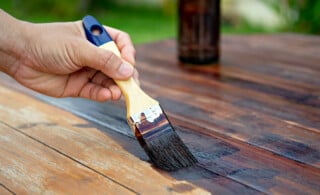 The Best Roller for Staining Wood Decks or Fences
The Best Roller for Staining Wood Decks or Fences 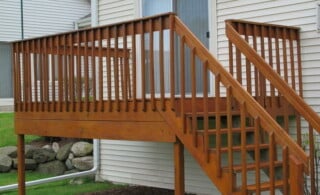 Deck Mold and Mildew
Deck Mold and Mildew 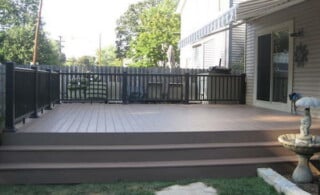 Composite Decking
Composite Decking 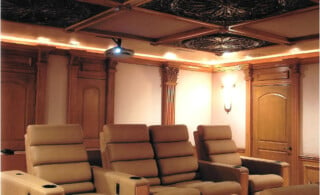 Is It Better to Paint or Refinish Woodwork?
Is It Better to Paint or Refinish Woodwork? 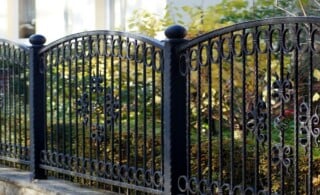 Best Fencing Styles
Best Fencing Styles 

Are You Familiar With This Topic? Share Your Experience.